AL Series
The AL Series is a collection of artist’s books produced and published by ArtsLibris with the support of the Fundació Banc Sabadell.
ArtsLibris launched it with the aim of promoting the publication of new work by artists who have demonstrated, in their previous work, a clear interest in the field of artist’s books.
Miguel Trillo, Souvenirs (AL Series núm. 9)
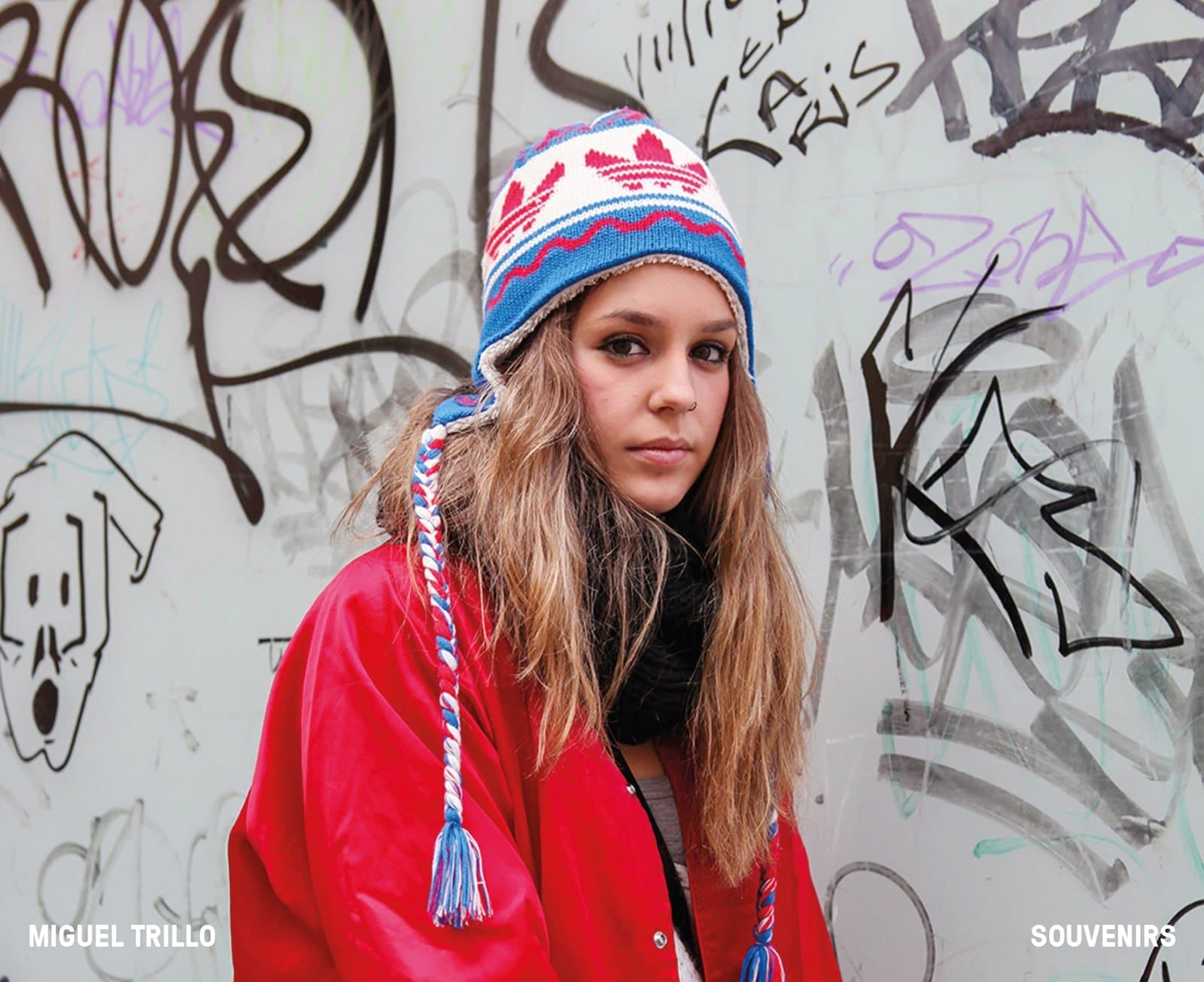
Published by: ArtsLibris, AL Series
Author: Miguel Trillo
Director of ArtsLibris and the AL Series: Rocío Santa Cruz
Design: Pedro Hugo
Printing: I am Nuria
Year: 2025
ISBN: 978-84-09-77535-4
10.00€
Souvenirs brings together 17 photographs by Miguel Trillo, taken in Barcelona, outside the MACBA and the CCCB, between 1998 and 2018.
It is published in the AL Series on the occasion of ArtsLibris MACBA Barcelona, the International Fair of Artists’ Books, Photobooks and Self-Publishing, 2025.
The AL Series is a collection of artists’ books supported by the Government of Catalonia, the Barcelona City Council and the Ministry of Culture.
Oriol Vilanova, Mercats, mercaders, mercaderies (AL Series n. 7)
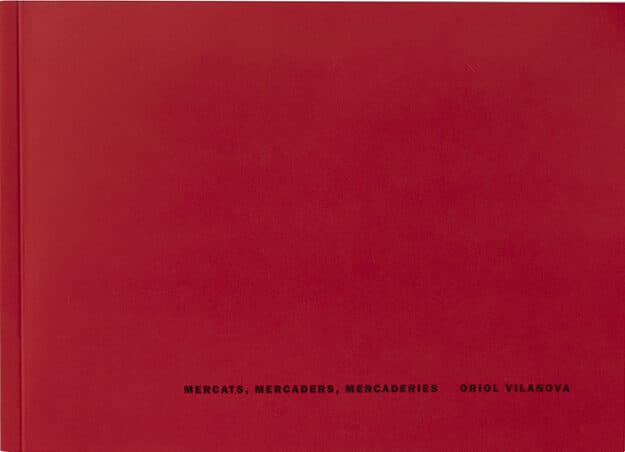
Publisher: ArtsLibris, Series AL
Author: Oriol Vilanova
Dimensions: 13 x 18 cm
Language: Català, Castellà
Year: 2023
ISBN: 978-84-09-51581-3
10.00€
This book by Oriol Vilanova, fruit of the forest with collaboration with the einaidea platform, has been carried out within the framework of the 14th edition of ArtsLibris, Fira Internacional del Libre d’Artista, el Fotolibre i l’Autoedició – from June 9 to 11, 2023 – in Barcelona. The AL Series is a collection of artists’ books published by ArtsLibris Barcelona, supported by the Generalitat de Catalunya and the Barcelona City Council. This editorial initiative includes the general support of the Banc Sabadell Foundation.
Mabel Palacín, El Pasajero (AL Series n. 6)
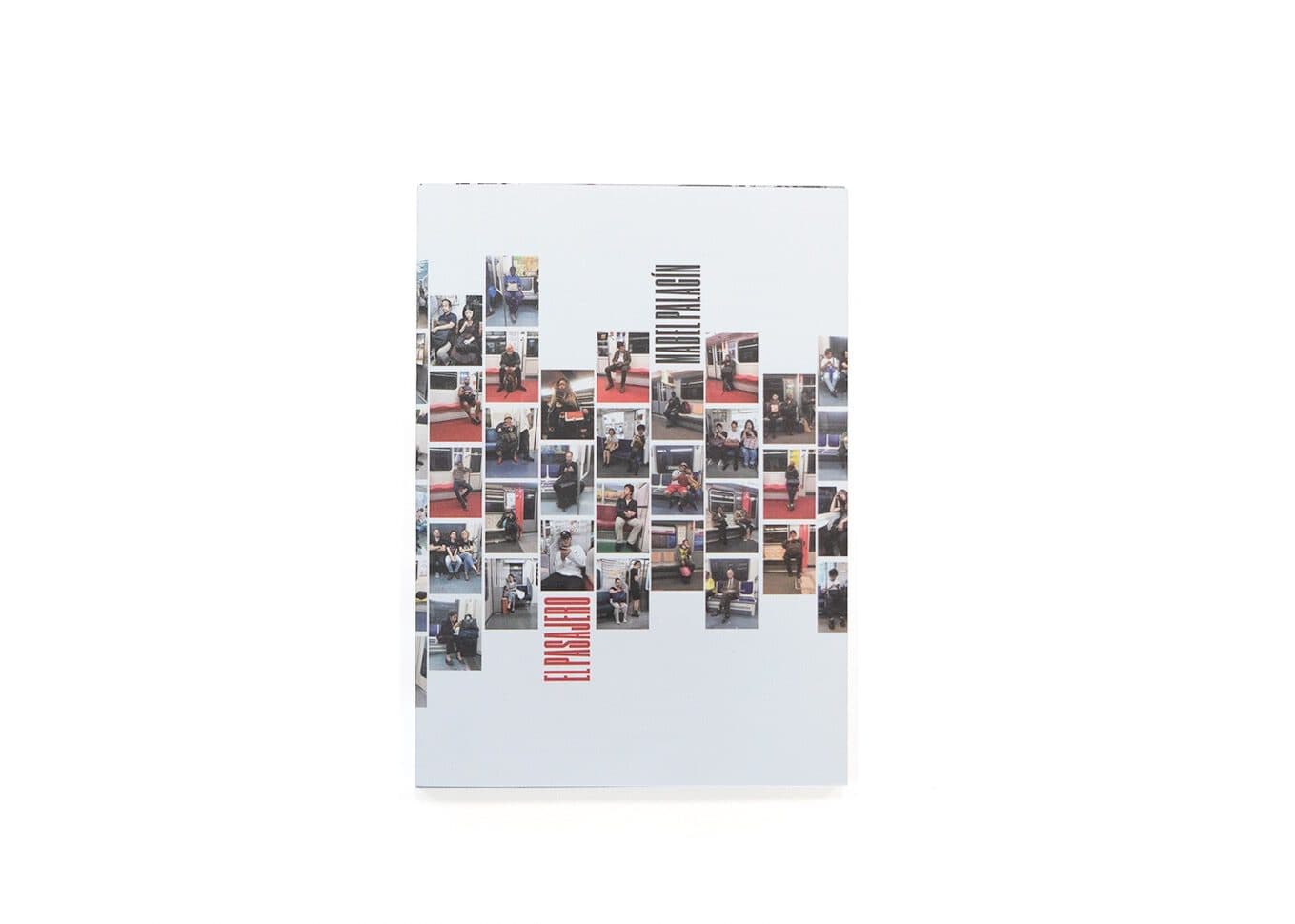
Publisher: ArtsLibris, AL Series
Year: 2022
Edition: First edition, 400 copies
Dimensions: 15 x 21 x 1 cm
Structure: Softcover book, with dust jacket and flaps containing printed image and text. Sewn paperback, uncovered.
Technical details: Offset printing
15.00€
Aware that an image is rarely just an image, for approximately two years, Mabel Palacín has taken photographs of passengers on public transportation in numerous cities. Cities where she lives, has temporarily lived, or has been passing through.
Fleeting encounters with all kinds of people, characters for her, trace a human geography of movement that stimulates fantasy. She has often wondered if she might cross paths with any of the commuters again, but in this time, it has never happened. Instead, she has encountered the gestures of some transported by others, and from station to station, she has observed the beauty of repetition and imagined patterns in which to read messages and search for snapshots made of data.
Data, like snapshots, capture moments of existence, and their visualization has become a way of communicating complexity. We generate data that generates us, and this cycle extends a quality of photography: seeing what otherwise could not have been seen, discovering hidden perspectives of the world. El pasajero is a set of nearly 4,000 photographs that generate shapes, drawings, stories. El pasajero is all the passengers, or whoever each one decides to find among them all. An image is rarely an image anymore; we move in an interdependence where it’s difficult to recognize our own limits and our contours become blurred.
El pasajero is first presented in Suburbia, where the images generate circles that organize gestures and resonances, forming an eye that looks at us while 77 passengers check their phones, 15 read, 16 sleep, 22 look at us, but only one hugs a loaf of bread.
Fina Miralles, Avec Plaisir (AL Series n.8)
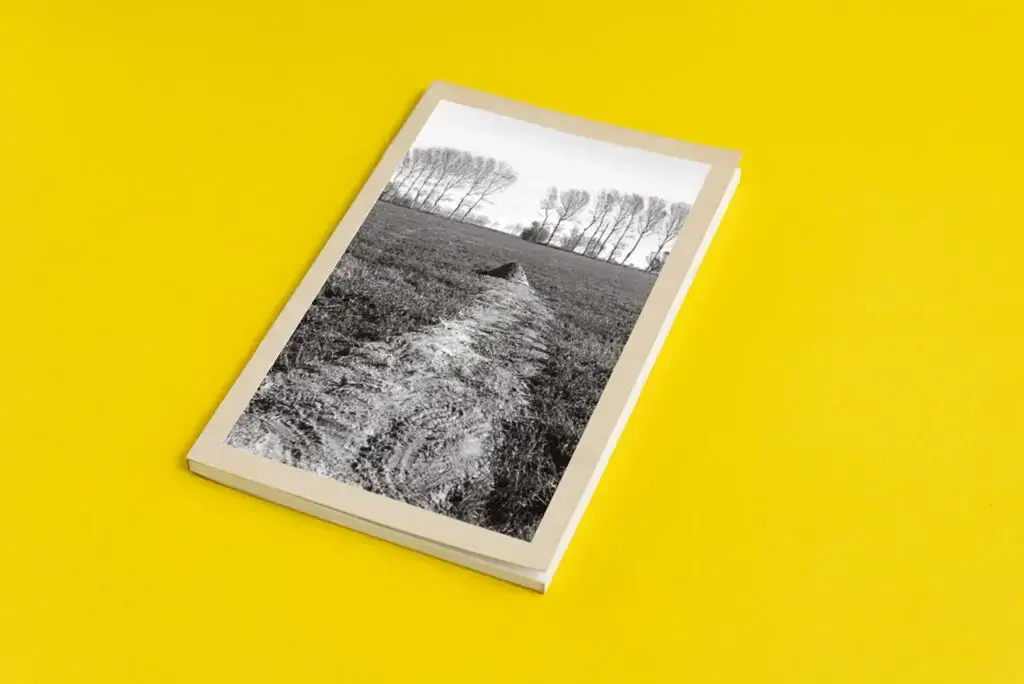
Published by: ArtsLibris, AL Series
Author: Fina Miralles
Director of ArtsLibris and AL Series: Rocío Santa Cruz
Editing and design: Alex Gifreu
Publication coordination: Raquel Sayago
Linguistic revision and translation of texts: Gabriel Planella
Printing: Gràfiques Trema
Year: 2024
ISBN: 978-84-09-66236-4
20.00€
Avec Plaisir, which brings together poems and photos by Fina Miralles, is published in Sèire AL, on the occasion of ArtsLibris MACBA Barcelona. International Artist’s Book, Photobook and Self-publishing Fair.
Woman and fiction, Itziar Okariz, (AL Series n. 5)
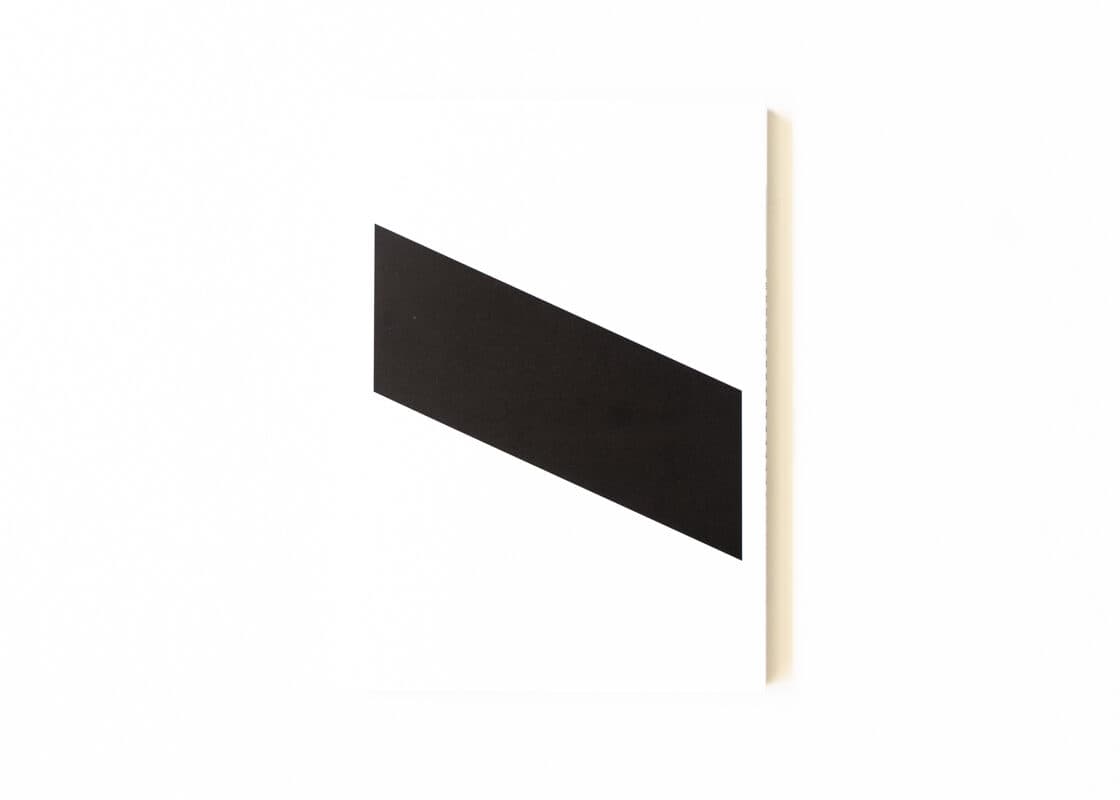
Barcelona: ArtsLibris, 2020
Typeface: Fracktif
Papers: Munken Polar 130 g/m² (poster), Lynx 130 g/m² (interior), Polar 300 g/m² (cover)
Swiss-bound and American-coated
Preparatory photography: Dani Mera
Printing: Gráficas Trema, Girona
400 copies
First edition, July 2020
ISBN: 978-84-09-21497-6
30.00€
Itziar Okariz is known for examining, questioning, and challenging the boundaries between what is private and what is public, something she has explored over the past two decades in sculptures, videos, performances, and vocal pieces. In her artist’s book, Woman and Fiction, she references two lectures by Virginia Woolf that later merged into the famous novel A Room of One’s Own, first published by the author’s publishing house (London: The Hogarth Press, 1929). Widely considered a seminal feminist text, the essay, a cross between fiction and non-fiction, is set at Oxbridge University, in which a narrator examines whether women are capable of creation and whether they, in fact, have the freedom to create works of the caliber of William Shakespeare.
Mariana Castillo Deball, Sun Ra. En algún lado y en ninguno. Poemas (AL Series n.4)
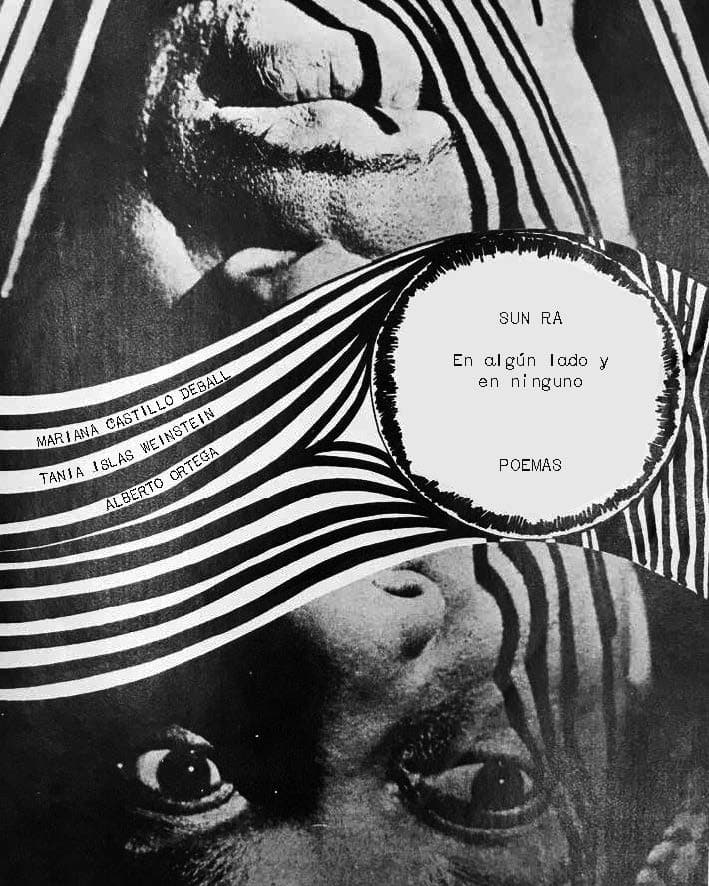
Barcelona: ArtsLibris, 2019
In collaboration with Bom Dia Boa Tarde Boa Noite (Berlin).
1000 copies.
120 p.
25 x 20 cm
Off-set print, b/w, paperback
ISBN: 978-84-09-10826-8
Distribution: ArtsLibris
20.00€
En algún lado y en ninguno is a collection of poems by the jazz musician and poet Sun Ra (Alabama 1914 – Birmingham 1993), selected and translated into Spanish by Mariana Castillo Deball, Tania Islas Weinstein and Alberto Ortega.
The adventure began in a library that loos like a spaceship, beside a monument in the shape of a burned sweet that celebrates the first atomic reaction generated by human beings with a plaque that shyly suggests that this powerful energy could be used for beneficial ends. Inside this lunar library, in the University of Chicago, is the special collections centre, where the papers of Alton Abraham – Sun Ra Collection, comprising the period 1822-2008, are kept. Alton Abraham (1927-1999), entrepreneur and hospital technician, was a friend and partner of Sun Ra, and throughout his life he collected manuscripts, ephemeral documentation, artefacts, photographs and video and audio recordings of the work of Sun Ra and his collaborators. In Abraham’s archive, which occupies 48 m of linear shelf space and consists of 146 boxes and a large file, there is, among other items, Sun Ra’s briefcase, containing his lawyer’s card, the insurance receipt for his car, a cabalistic amulet and a million dollar bill perforated in the centre.
There we also found Sun Ra’s typed poems, with handwritten corrections and in various versions. His poems generate a parallel geometry, a world that is precise and ambiguous at the same time. A sidereal enthusiasm made us think that the translation of his poems into our mother tongue could bring us close to his cosmos, and simultaneously allow us to share them with the Spanish-speaking firmament.
Wilfredo Prieto, Loophole (AL Series n.3)
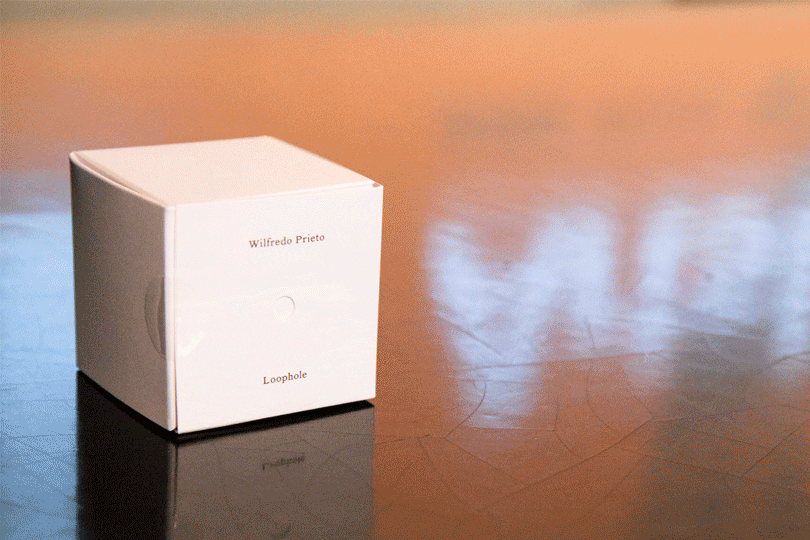
Barcelona: ArtsLibris, 2018
In collaboration with the Annet Gelink galleries,
Kurimanzutto, Massimo Minini and Nogueras Blanchard.
800 copies: 400 in Spanish and 400 in English.
[600] p., in 4 volumes
5.5 x 5.5 mm
Off-set printing in 4 colours, paperback
ISBN: 978-84-09-01109-4
Distribution: ArtsLibris
20.00€
Loophole consists of four books (and a colophon) of a very small size all kept in a case designed for the occasion. This book extends Prieto’s series of artist books that share a small format and a hole that, acting as the main protagonist, mints them and passes through them. A constitutive element, the hole, of minimalist reminiscence, which we can understand as a derivation of his interest in those corporeal, circular objects that often form part of his sculptures, drawings and photographs.
This edition offers, on one hand, a singular formalisation that it possesses in the extremely small format (4 x 5 cm) a special nature that leads us to think of precedents like Dieter Rotho by Michelangelo Pistoletto, both interested in making small-format editions. Likewise, the circular hole as a refers us to a constant that is found in Prieto’s sculptures and objects, be it a coin, a ball of wool, a cup, a rubber bullet made of chocolate or a pea, it is about elements that foment contemplation of circularity, a recurrent theme in his work.
Loophole includes images of moments and places that the artist has experienced: from a plane ticket to a credit card, from a bill for breakfast in Venice to a visiting card, that show us the daily experience of the artist and help him to rewrite his personal history.
Javier Peñafiel, Teatro dentífrico (AL Series n.2)
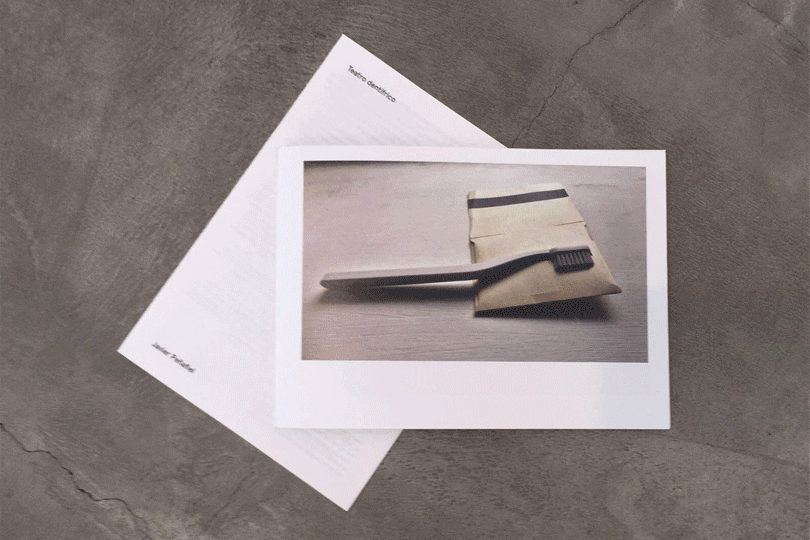
Barcelona: ArtsLibris, 2017
500 copies, 31 of which contain original calligraphic interpretations by the author on the title: Teatro dentífrico (Dentifrice theatre).
[40] p., 120 x 171 mm
Design by Àlex Gifreu
Digital printing, sewn paperback
Illustrations in colour
ISBN: 978-84-697-2408-8
20.00€
“The format of Teatro dentífrico is inspired in Bertolt Brecht’s Modellbücher (model-books), in which collage was fundamental, intending to be a pocket-sized book, a kind of notebook so that anyone who carries it about with them can have a dialogue with the artist and leave among its pages written comments and drawings, inspired by suggestions from the photographs and texts, that function as aphorisms proposed by the artist.
“This edition offers a telling, a cinematic run through the notebook, in the pages of which we find small scenographies with the sole protagonist of a toothbrush, that we encounter again and again in differing situations and where often a zoom view predominates that focuses and concentrates the view of anyone thumbing through the edition and in the object and in the watchword that accompanies it. A toothbrush chosen for a very simple reason: the mouth, motif of fear, of vulnerability, of possible cruelty that passes through it, and the brash as a hygienic tool for it.” (Glòria Picazo).
Martín Vitaliti, 360° (AL Series n.1)

Barcelona: ArtsLibris, 2016
360 copies of which 300 numbered
12 numbered and signed
48 numbered H.C.
[20] p., 210 x 270 mm
Offset printing, paperback
Illustrations in b/w
ISBN: 978-3-86335-943-0
Distribution: Buchhandlung Walther König, Cologne
39.00€
“We could define this book as a “concept-comic”. It is based on a single page of La Banda del Missouri (The Missouri gang), designed by the acclaimed Italian Hugo Pratt (published in Tótem Extra 20. Especial Western(Totem Extra 20. Western special), Madrid: Publisher Nueva Frontera, 1978, p. 91). Its grid of three cartoons has been reproduced forty-one times, while Vitaliti has developed the respective illustrations, which results in thirteen panoramic views of each scene of the book.
“The narrative as such, the discovery by some Indians and guards of a riderless horse and a body floating in the Missouri river, has no special meaning; what it does have is the emptiness of a great landscape developed by Vitaliti’s intervention. This landscape evokes a kind of “something inbetween”, creating on one hand a cinematographic, visual effect, and on the other an illustrated script that could be said to be frozen.
“Certainly, compared with other well known representations of landscapes, and we think for example of Panorama of San Francisco from California Street Hill (1877) by Eadweard Muybridge, or Every Building on the Sunset Strip (1966) by Ed Ruscha, Vitaliti’s focus looks very complex. What might appear at first sight as a popular book of comics has been transformed into a cadavre exquis: a story that already exists retold by somebody else, which does not lead to a climax but fixes it as if it had been detained.” (Moritz Küng).
Iñaki Bonillas, Hielos- Picos (AL Series n.0)
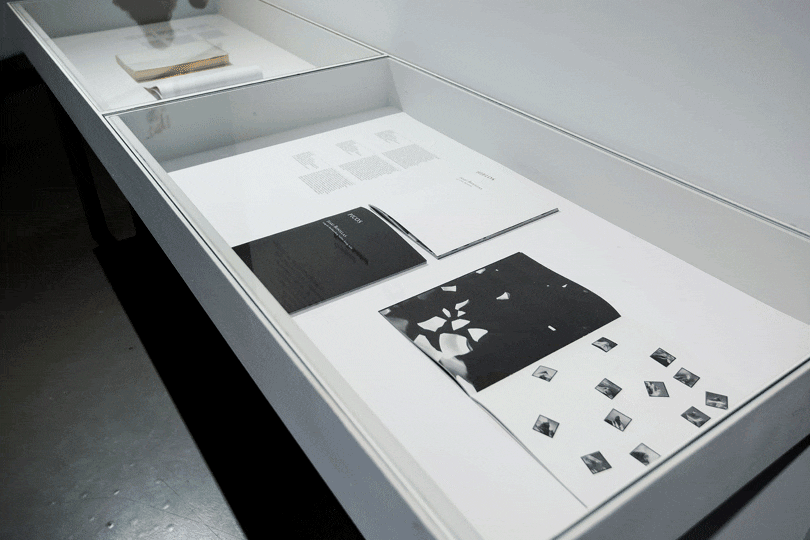
Barcelona: ArtsLibris, 2015
500 copies, of which 400 numbered
50 numbered and signed
50 numbered H.C.
48 pages
28,1 x 21,7 cm
Offset printing, paperback
Illustrations in b/w
ISBN: 978-3-86335-708-5
Distribution: Buchhandlung Walther König, Cologne
30.00€
The book Hielos-Picos (Ices-Peaks) has a circular structure and two covers, that is to say it can be read by turning the pages from left to right or vice versa. One half of the book presents images of La idea del norte: picos (The idea of the north: peaks), a piece by Bonillas inspired in the proposal that Carl Andre sent to Seth Siegelaub for the famous Xerox Book (1968). Like the other artists invited by Siegelaub to participate by sending their ideas for the book, Carl Andre has 25 pages of the publication, which in his case were filled progressively with boxes that seemed to float on the surface of the paper. In half of the pages of Hielos-Picos Iñaki Bonillas has arranged the boxes in the same positions as Andre throughout the pages, but has filled them with black and white photographs of the world’s highest mountain peaks.
The other half of Hielos-Picos shows images of the work Hielos: trozos rotos de porcelana blanca reproducidos mediante una fotocopiadora (Ices: broken pieces of white porcelain reproduced by a photocopier), in a way that evokes pieces of ice that are breaking away and separating from each other.
